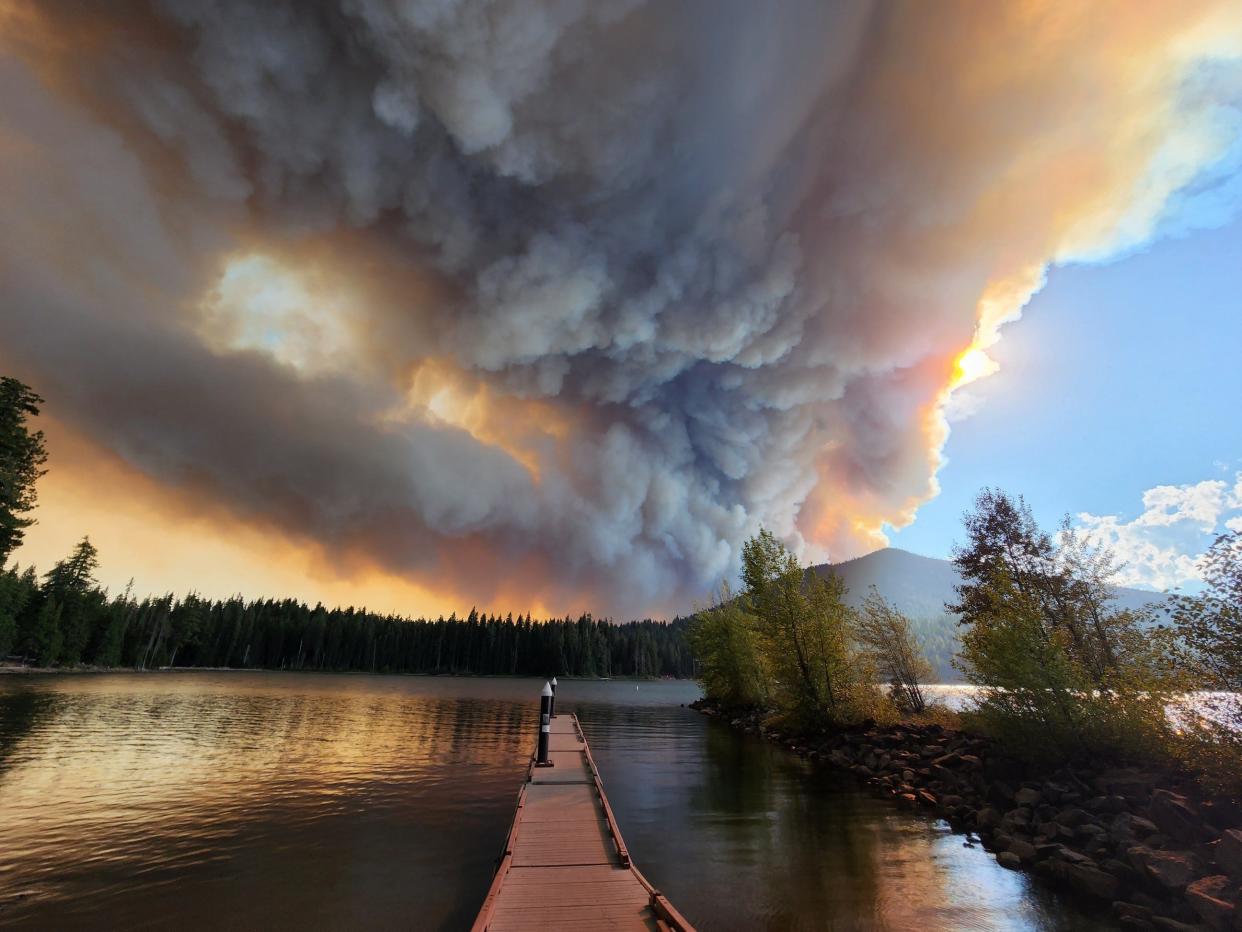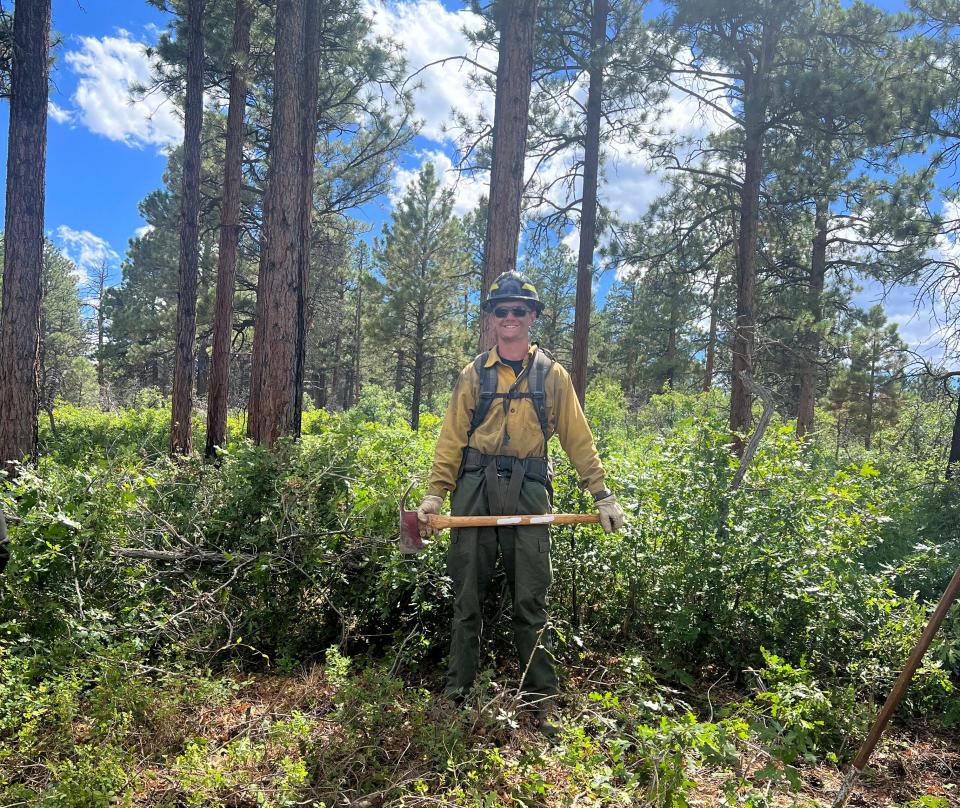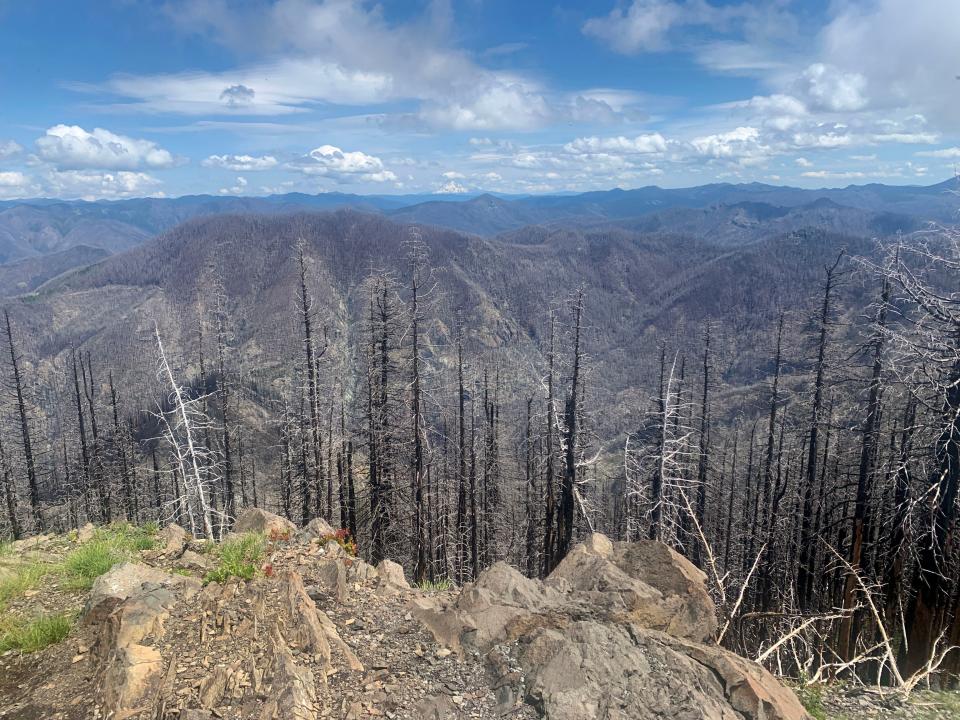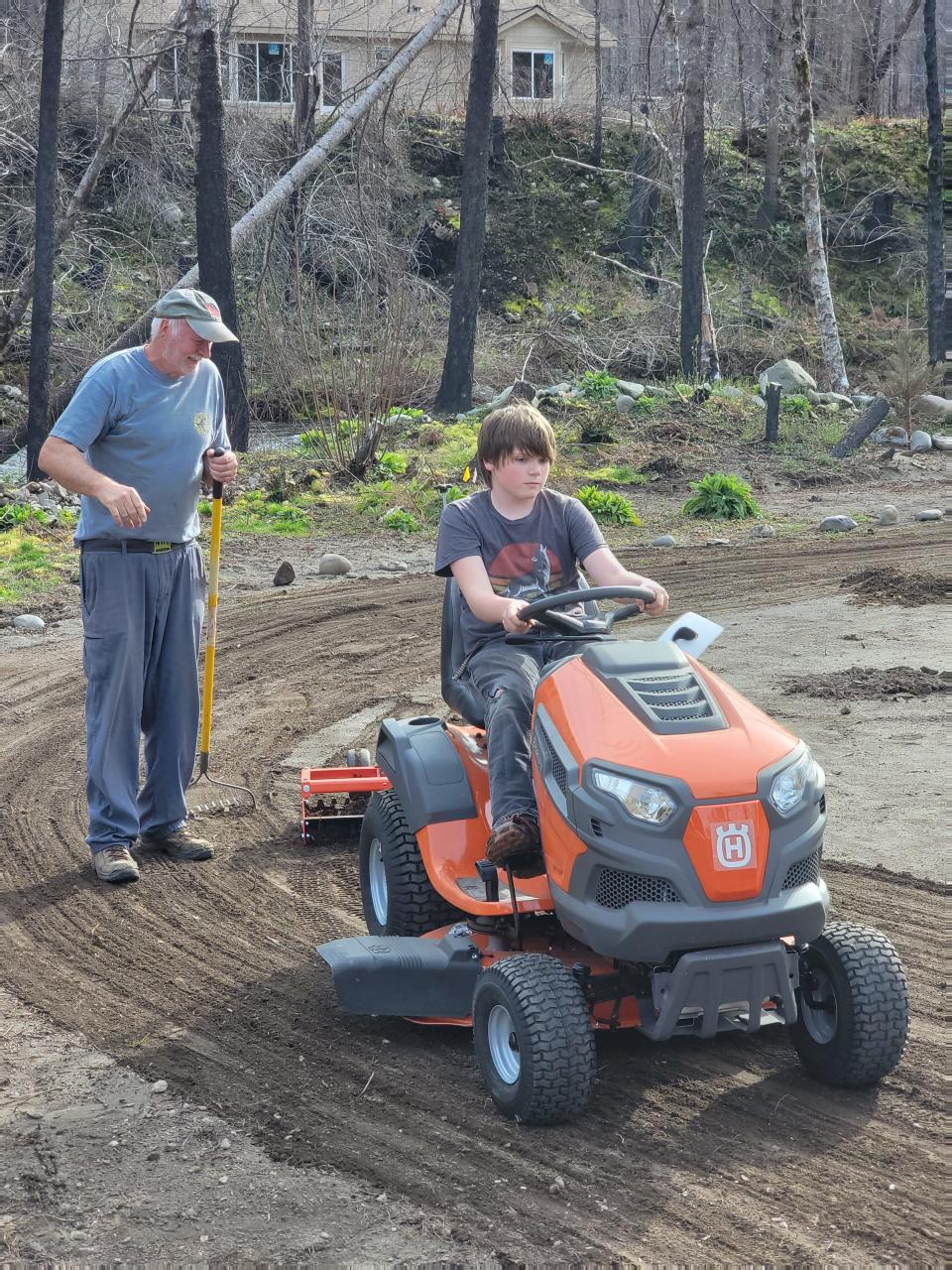'We just ran through the fire.' Generation of Oregon kids marked by explosive wildfires

Parker Noble was 10 when he leaped through a wall of flames to escape what would become one of Oregon’s largest wildfires of 2018. He’d been soaking at Terwilliger Hot Springs with his dad when the fire erupted, forcing them to sprint down the trail and through the inferno to reach their car.
“My dad held my hand and told me to cover my mouth with my towel,” recalled Parker, who lives in Springfield. “And then we just ran through the fire.”
Maya Merrill was celebrating her 16th birthday when the ignition of the 2017 Eagle Creek Fire trapped her and nine of her friends in the Columbia River Gorge backcountry. A day that started with swimming and hiking ended with them huddled together in the forest overnight, watching the glow of the flames as their parents spent a sleepless night in Salem.
“It seemed like such a crazy event when I was a part of it,” Merrill, now 21, said. “I only really became aware of wildfires becoming more common in 2017 because I lived it. It’s been so sad to notice it become a pattern.”
Increasingly common and volatile wildfires are marking a generation of Oregon kids, giving them an experience far different from their parents. Since 2017, an average of 666,877 acres has burned each year across the state — double and triple that of previous decades.
The impact has been wide-ranging. Each autumn, poor air quality often cancels school sports practices or games. Wildfire closures have limited places to hike and camp. Evacuations, with kids forced to flee their homes with their families, have become common.
Todd Miller, superintendent of the Santiam Canyon School District, said just under 20% of his students lost their homes in the 2020 Labor Day fires.
“We had so many kids that had to live in hotels, or trailers, or with family,” Miller said. “There was the first trauma of getting ripped from their beds in the middle of the night to escape the fires, and then the secondary trauma of wondering, ‘Where are we going to live? What are we going to do?’
“Any time there is smoke in the air or fires nearby, it comes back. It’s something they have to fear. (Wildfires) just weren’t something that we thought about growing up, so for them, it’s very different.”
The rise of Oregon’s wildfire season
Wildfires have long been a part of Oregon’s natural cycle, and major wildfires have disrupted life in the past.
But in the past decade, particularly since 2017, the frequency and intensity of wildfires have altered the rhythm of life in Oregon. It’s created a fifth season — wildfire season — from August through September.
“Wildfires definitely happened occasionally in the past, but we didn't have the sky filling with smoke every single summer,” Oregon state climatologist Larry O'Neill said. “It wasn't something that we had to worry about every single year. And what's happened is that you know, our luck has run out.”
Fire experts attribute the rise in wildfires to multiple factors, but hotter and drier conditions are at the top of the list. Of the 13 hottest years recorded in Oregon, nine have come since 2000 and seven have come since 2010.
“This condition of climate change, of creating a drier landscape earlier in the summer, we expect to actually increase,” O'Neill said. “We expect that the wildfire season will be happening earlier, lasting longer, and be more intense in the middle.”
From 1992 to 2001, Oregon wildfires burned an average of 198,000 acres per year, according to data from the Northwest Coordination Center. In the years between 2002 and 2017, that number jumped to an average of 433,541 acres burned each year. Since 2017, it’s been an average of 666,877 acres with the fires moving closer and even into urban centers.
The 2017 season is often seen as a turning point — the summer wildfires started to become an annual plague. It was the summer the Chetco Bar Fire nearly torched the town of Brookings. The Whitewater and Milli fires smoked out Oregon skies during the total solar eclipse. And outside Portland, a firework tossed by a teenager from Eagle Creek Trail ignited a fire that commanded the state’s attention like few others in history.
Eagle Creek Fire survivor becomes wildland firefighter
Noah Brown was 17 and a junior at South Salem High School when he sent out a text message to his closest friends on Sept. 2, 2017. The plan was for one last summer adventure — a hike on Eagle Creek Trail — and to celebrate Merrill’s 16th birthday.
After swimming and hanging out at Punchbowl Falls, the teens started to see smoke and heard warnings about a fire nearby. Brown hiked down the trail to investigate and came upon a sight he's never forgotten.
“As we hiked down the trail, we could hear a rumbling sound,” Brown said in 2017. “We rounded one corner, and it was like getting hit with a wall of heat. There was smoke everywhere and flames burning across the trail.
“It was surreal.”
The teens were trapped, along with 150 other hikers, with no way to return to their cars. They eventually spent the night sleeping on the trail, as the flames rose in the distance, and were reunited with their worried parents the next day.
Six years later, Merrill and Brown have processed the experience differently. Brown has become a wildland firefighter, in part because of the Eagle Creek experience. He worked the fire lines in Colorado this season.
“We're trying to balance protecting people, protecting human resources, while also keeping the forest healthy," Brown said of firefighting. “The increase in frequency and intensity of wildfires is forcing people to realize that we are part of nature, not separate. This is a realization older generations didn’t always have to deal with."
Merrill said the Eagle Creek experience made her realize how quickly Oregon’s most beautiful places could be transformed.
“I’ve kept hiking,” she said. “We have to enjoy nature, especially in Oregon, because you never know what’s going to happen next.”

'I did not grow up considering it could happen'
The year 2020 was difficult on just about everyone, but it was particularly wrenching for students of the Santiam Canyon. Mired in the depths of the COVID-19 pandemic, one of the worst wildfire disasters in state history swept through the canyon Labor Day night. The Santiam/Beachie fires killed five people and destroyed 600 homes. Just about every student was impacted in some way, said Miller, superintendent for the Santiam Canyon School District.
“Even for the kids who didn’t lose their homes, this became the first time in their lives where they just didn’t feel safe,” Miller said.
The twin challenges of the pandemic and wildfire aftermath made school difficult.
“How do you do ‘learn from home’ when almost 20% of the homes are gone or there’s no power or water?” Miller said. “That first year we opened up mobile classrooms up in places like Detroit, with generators and restrooms, just to try and be a place to educate and let them be kids for a while.”

About 20% of the students left the district. Miller said the youngest students remain behind in class, middle schoolers have struggled with social skills and many suffer from mental health.
“You always have kids that struggle or need support, but now we see it with more students,” Miller said. “It’s not just the kid that gets in trouble, it might be the star athlete or student that’s struggling. We’ve really beefed up our counseling.”
Miller said the fear of wildfires remains. At the beginning of the school year in 2022 — two years after the fires — utilities shut down power in the Santiam Canyon due to another extreme wildfire event.
“That was hard,” he said. “It’s the beginning of the school year — that time when you’re excited to see your friends. Instead, we’re dredging up fears of the past and canceling school.
“It just puts this fear in their mind — this thing that we never had to think about before. I did not grow up considering it could happen. But for them, it’s always there.”
'A sad reminder of what used to be'
Oregon’s wildfires have not only brought fear and pain, they’re also taken away places kids can enjoy.
Noble, who was 10 when he narrowly escaped the flames at the Terwilliger Fire, saw his favorite campground surrounded by flames this summer. Bedrock Campground, with beautiful forests and spots to swim, is about 15 miles from the Springfield teenager’s house. The 31,590-acre Bedrock Fire erupted near the campground in July and has been closed ever since. It's not clear when it will reopen.
“I really liked it there,” Noble said.

Over the past five years, western Oregon has seen hundreds of thousands of acres under long-term closures or transformed by fire. Beloved places such as Oneonta Gorge, Opal Creek and Shellburg Falls — along with countless others — have been behind locked gates for years.
"Terwilliger used to be one of my favorite places, Bedrock was quickly becoming Parker's,” said Robert Noble, Parker’s dad. “The black trunks that are left are just a sad reminder of what used to be. The scorched land, smoky skies and hazardous air, having to evacuate our home a few years back and fire bans have strongly affected our love of the great outdoors."
Replanting a forest
A generation of Oregon kids, including Elliott Baker, will grow up in wildfire scars.
Baker was 10 when the Beachie Creek Fire in 2020 burned his family’s cabin in the Little North Santiam Canyon. His favorite trails in the Opal Creek Wilderness — an old-growth forest of emerald swimming holes that was an escape for a generation of kids from Salem to the Santiam Canyon — were all but incinerated.
“I was really sad,” Baker said. “The forest was dead and was really nothing except for dirt and burnt trees, no bushes or anything. We had these nice hiking places and it's pretty sad when your favorite hiking spot is all gone.”

Amid the rubble of his family’s cabin, and a forest devoid of trees, he’s worked to rebuild and replant.
Three years after the fire and now 13, Baker sees changes in the forest. Maple trees and bushes have started to spring up. The cabin is 99% finished and the family is spending nights there again.
“We're literally planting a forest,” said Wes Baker, Elliott's dad. “I think for (Elliott) growing up, there's going be a lot of pride and ownership in all the work that's been done to make it look like it's going to in the future.”
Noble also took the long view, recognizing not all is lost. Reports from fire crews indicated that his favorite campground, Bedrock, was not severely burned and could reopen next summer.
"The jumping spots will still be there," he said. "The water still flows. And the trees and bushes will grow back. Someday."
Zach Urness has been an outdoors reporter in Oregon for 15 years and is host of the Explore Oregon Podcast. Urness is the author of “Best Hikes with Kids: Oregon” and “Hiking Southern Oregon.” He can be reached at zurness@StatesmanJournal.com or 503-399-6801. Find him on Twitter at @ZachsORoutdoors.
Abigail Landwehr is a former outdoors journalism intern for the Statesman Journal.
This article originally appeared on Salem Statesman Journal: Oregon wildfires have state's youth confronting new reality

